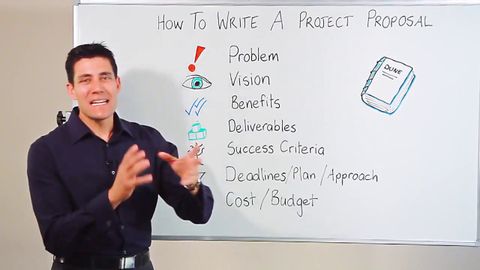
Subtitles & vocabulary
Project Proposal Writing: How To Write A Winning Project Proposal
00
chenqianyu posted on 2016/10/19Save
Video vocabulary
important
US /ɪmˈpɔrtnt/
・
UK /ɪmˈpɔ:tnt/
- Adjective
- Having power or authority
- Having a big effect on (person, the future)
- Uncountable Noun
- A matter of great significance.
A1TOEIC
More problem
US /ˈprɑbləm/
・
UK /ˈprɒbləm/
- Noun (Countable/Uncountable)
- Something difficult to deal with or causes trouble
- Question to show understanding of a math concept
- Adjective
- Causing trouble
A1
More paint
US /pent/
・
UK /peɪnt/
- Transitive Verb
- To make a picture with colored liquids
- To describe as
- Noun (Countable/Uncountable)
- Colored liquid you apply with a brush
A1TOEIC
More picture
US /ˈpɪktʃɚ/
・
UK /'pɪktʃə(r)/
- Noun (Countable/Uncountable)
- General situation or state of being
- Mental image of what something is or looks like
- Transitive Verb
- To understand or imagine something
- To imagine someone or something in an image
A1TOEIC
More Use Energy
Unlock All Vocabulary
Unlock pronunciation, explanations, and filters
